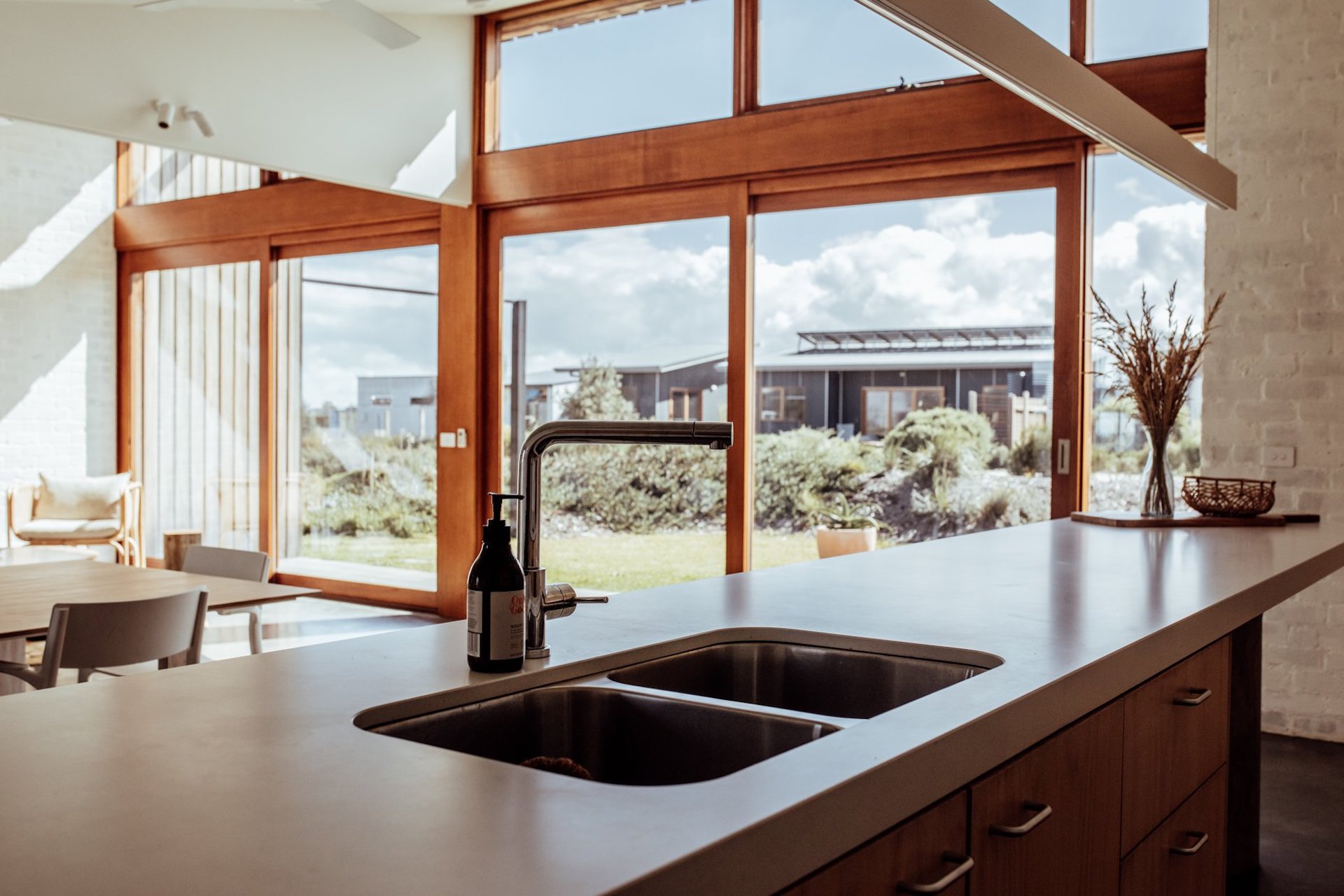
The Cape: How the right home can double your household wealth
The Cape

Imagine an ideal sustainable community. It’s got highly efficient houses, community gardens, a great natural environment and so much renewable energy it generates five times more than it needs. Then place it a nice distance from Melbourne – an easy low cost trip using your electric car. At Cape Paterson, Brendan Condon and his team have done it. No wonder sales are rocketing. You might need to jump in quick for stage three.
The Cape at Cape Paterson, located around 130 kilometres south-east of Melbourne, is proving that a grand vision when well-executed can deliver a sustainable lifestyle.
The first two stages of the masterplanned green community have almost sold out, and stage three has just been released to market.
It is a very different proposition to the standard greenfields estate. The design guidelines mandate a minimum of 7.5 stars energy efficiency, all homes must have solar and rainwater storage, and gas is not even an option.
Recent heatwaves demonstrated the value of the super-sustainable design approach
The Cape also has a large community garden, beach access, walking and cycling trails, an offleash dog park, a wetland area being constructed to provide habitat for native fauna and birds and plans for a conference centre, co-working hub and retail precinct.


The sustainable design approach has already proved its worth
Currently, there are around 20 households of mixed ages and backgrounds who have already moved in, and founder and director Brendan Condon says the recent heatwaves demonstrated the value of the super-sustainable design approach.
Most households did not need to use the airconditioning, even when outside it was in the high 30s.
“People had comfort right through summer”
Households have also been finding their energy use is well below the proposed energy budget for the estate – and some are even making a profit and receiving negative bills.
In a sense, living at The Cape is a way of “doubling your wealth by halving your expenditure,” Condon says.
Many homes are EV-ready, allowing occupants to forgo petrol costs, and the estate as a whole is generating roughly four to five times the energy households use.
Condon says the next major piece of technical work will be finding a way to harvest and harness this energy surplus.
The first stage of the community garden is up and running with residents involved, and when complete, the garden will accommodate up to 100 gardeners, including members of the nearby Cape Paterson township. As part of stage three, a large children’s playground is being built.
In terms of the long-term picture, the community-wide water-harvesting, storage and re-use strategy, in combination with the energy independence, reduced transport costs and food from the gardens positions it to be “future-ready” and well adapted for future climate change impacts.
The design of the homes prioritises thermal comfort as well as energy-efficiency, making each home a “climate refuge” during extreme heat.

There will be quality control for new homes
The Cape team also maintains oversight and verification of how homes are designed and built. Builders and designers receive training in sustainable design and construction, each proposed design is assessed by a design review committee, and the project team performs checks to ensure homes are achieving standards.
Additional checks are carried out such as blower door testing and thermal imaging.
Condon describes the relationship between the local builders and trades working to deliver the Cape homes as “co-opetition”, with sharing of knowledge and skills.
The big opportunity is achieving zero emissions as a community
The first display home was a test-bed for performance verification. The results of blower door testing identified the “Achilles heels” of a dwelling, and these are now a focus for quality management for all builds.
On completion it is expected around 230 households will call The Cape home. Brendan says there are targets in place for combined stationary energy savings of $500,000 a year across the community compared to a conventional estate, and a stretch target for $500,000 a year savings in avoided petrol spend by 2030 with uptake of EVs.
The big opportunity is achieving zero emissions as a community, he says.
So far, The Cape has attracted families and remote workers
Those purchasing at The Cape to date have included families with young children escaping the Melbourne market mayhem and established professionals seeking an “e-change” who can work from home.
Each home site has full NBN and optic fibre cabling, and the co-working hub currently on the drawing board will also enable more telecommuting opportunities.
The Cape general manager, Clint Hare, says more people are “figuring out” the benefits of a home with minimal operational costs.
The payback on investment in sustainability features is experienced as soon as the first summer heatwave hits, he says.
Just not having gas installed to the estate generates a saving of $2 million over 10 years, according to research by Renew, which has used The Cape as a case study.

Sales at The Cape are performing well thanks to low operational costs
While the Melbourne metro market is currently a little wobbly, Hare says sales at The Cape are performing counter to the industry trend.
“Cost of living is a concern for people,” he says. “And awareness of that issue is growing.”
Our mission is to mainstream sustainability
Land lots available in stage three range in size from 354 square metres to over 1000 sq m and are priced from around $180,000 to $400,000. A house and land package has a starting price of around $450,000, Hare says.
For that, a buyer gets a lifetime of comfort, low or no energy bills, access to an urban farm, walking trails, beach access, whale watching opportunities and belonging to a community founded on sustainability values.
“Our mission to mainstream sustainability,” Hare says.








